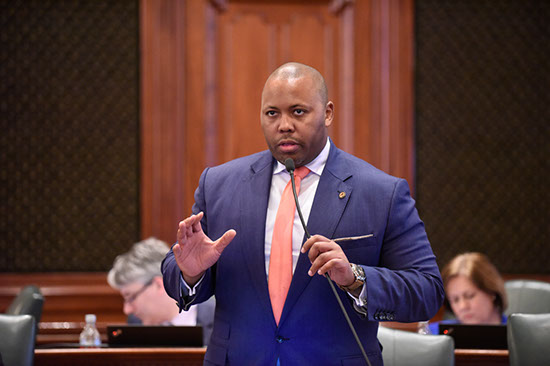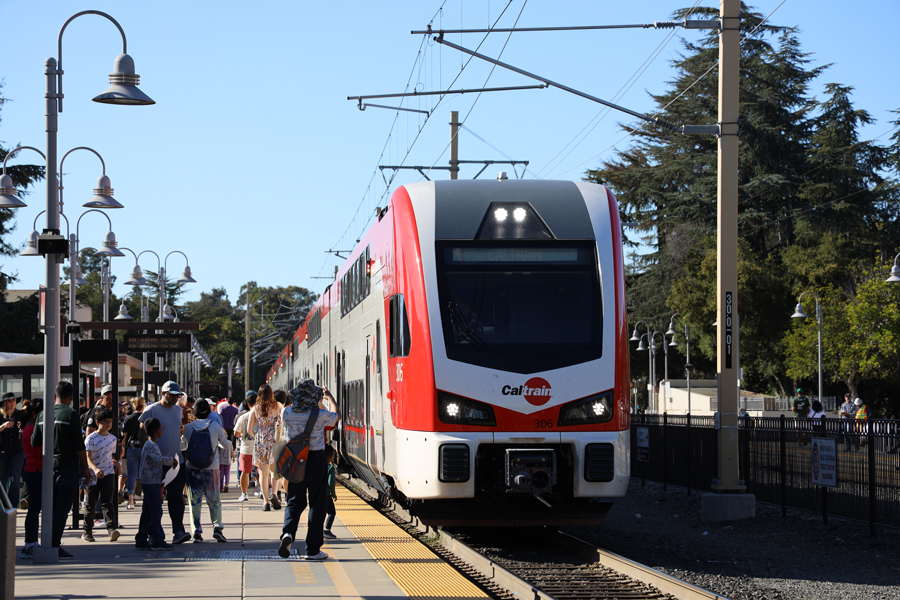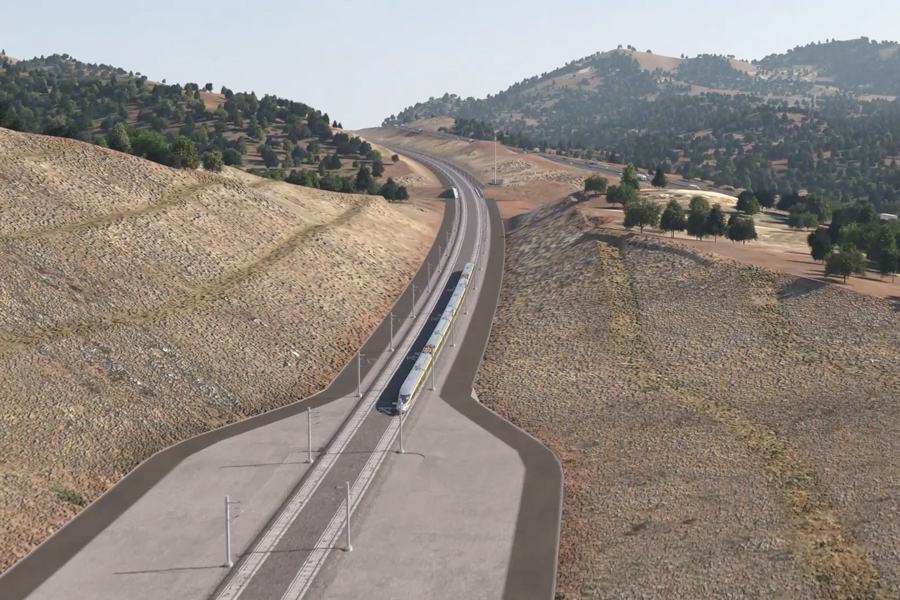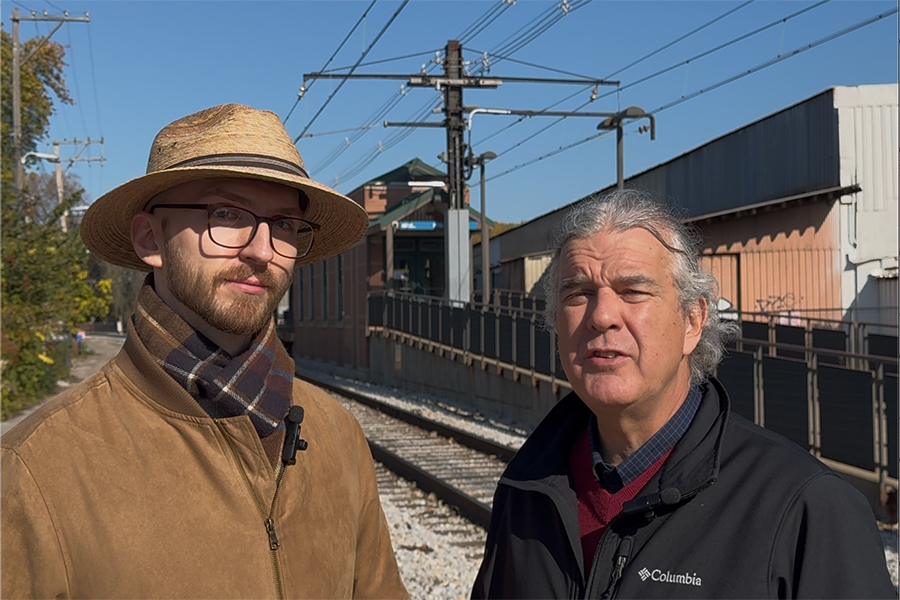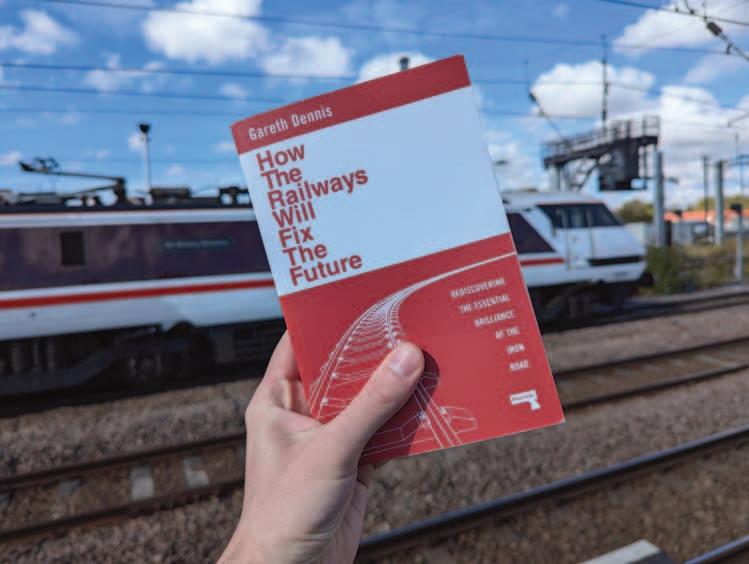Faster speed, increased frequency, and more reliable service are causing ridership growth on Caltrain, the San Francisco Bay Area's passenger railway. The ridership increase and service upgrades are a direct result of the electrification of Caltrain’s entire fleet of...
Advocates must keep up pressure to help him deliver on promise.
Illinois legislators will return to Springfield Oct. 14 for the Veto Session, at which they also can take up urgent legislation that they did not pass in the spring.
Such a piece of legislation is the “Fiscal Cliff” bill, H.B. 3438, which passed the Illinois Senate in May but was not called for a vote in the House of Representatives. The bill aims to find or generate $1.5 billion for transit systems statewide, when federal funding that kept systems running through the COVID pandemic runs out in 2026. If the funding evaporates and is not replaced, Chicago-area transit agencies say they’d have to reduce service by 40%.
This legislation is crucial to any efforts to expand rail service, in frequency or reach, anywhere in Illinois. The unease that we feel about this will not be diminished unless and until the governor signs his name to legislation. However, we did hear encouraging words over the weekend from State Rep. Kam Buckner (D-Chicago), one of the main legislators working the Fiscal Cliff bill.
Buckner addressed transit supporters at a fundraiser for the Chicago Growth Fund, a pro-housing group, in the parking lot of Demo Brewing Co., 1763 W. Berteau Ave. in Chicago.
“I can guarantee you, as I stand here in this parking lot that has become a community space, that we’re gonna do it,” Buckner said. “We’re gonna create a system that the people of this city and the people of this region deserve.”
The funding mechanism that’s in the bill the Senate passed is a 10% surcharge on ride-hail rides, and a $1.50 tax on food and goods delivered to homes via car or truck – the so-called “burrito taxi tax,” though it would apply to Amazon, UPS, FedEx and other home deliveries too. Funding may still be subject to negotiations.
Buckner told us he has not counted vote commitments in the House yet. It takes 60 “yes” votes to pass a bill in the House.
The bill contains provisions that should be palatable to Downstate legislators:
- The bill includes $200 million a year for Downstate transit infrastructure, money which can be used for inter-city rail.
- Downstate residents, especially in areas that have little transit service, depend much less on home deliveries than Chicago-area residents do, so their tax burden will be roughly commensurate with their transit use.
- Local business owners Downstate will be more competitive on price vs. Amazon once a delivery fee is factored in, though Buckner said those business owners have not made themselves heard in Springfield in an organized way on this legislation.
Finding the votes
It’s always hard to get politicians to raise taxes, especially in Illinois, which has the ninth highest level of state and local taxation in the nation, at $8,148 per capita, according to the Tax Foundation.
There’s an axiom that you can’t tax your way to prosperity, which is more fully and accurately attributed to Sir Winston Churchill: “A country which tries to tax itself into prosperity is like a man standing in a bucket and endeavoring to lift himself up by the handle.”
He was young at the time. It turns out taxes often correlate with prosperity, because public investment induces economic growth.
The highest-taxing states on the Tax Foundation survey are New York, California, Connecticut, Hawaii, New Jersey and Massachusetts. The lowest-taxing states are Alabama, Tennessee and Mississippi – states which, in addition to lacking the public investment of the high-taxing states, also depend heavily on federal outlays supported by taxes collected in the prosperous states.
Our legislators should not be afraid to levy a tax on an industry that vomited itself into existence within the last 20 years, without there ever being an accounting of the negative externalities it produces.
Cost vs. benefit
Private automobile use is expensive – $12,296 per year for the car owner, according to the Bureau of Transportation Statistics. This includes the cost of purchasing and financing the vehicle, insurance, maintenance and fuel. The price of fuel includes some taxes that mitigate the cost to society of automobile use, but overall car ownership places a cost burden on other people – especially when you take into account crashes (death, injury, property damage, emergency response), the cost of roads (including maintenance and snow removal), air pollution, noise, and the impact on land use. Every vehicle mile driven costs society $1.14; for a ride-hail or delivery driver, considering their down time and deadhead miles driven, it’s over $2, according to a calculation by Daniel Koslovsky in Streetsblog.
Meanwhile, a 2024 study by researchers at Argonne National Laboratory and the Massachusetts Institute of technology which attempted to account for everything, including congestion and activity cancellations from a reduction in transit service, concluded that “for every dollar invested in transit there is a return of $13 in the selected economic activities and travel time savings.”
So the conclusion we should all reach, all things considered, is that a “burrito taxi tax” finally attempts to recoup the costs placed on society by the very existence of the food delivery and ride hail industry, while turning around and investing the proceeds in transit, which is a net benefit to urban societies.
Transit is subsidized, of course – the trains and buses, the tracks, bridges, stations, everything. Fares pay for less, often much less, than half of operating costs. But transit costs are entirely calculable – the tax money and fare collection. There are no negative externalities.
A city or town can build around a train station in a sustainable way, whereas development around a highway exit does not pay for itself, in terms of the cost of providing streets, sidewalks, water and sewer lines, police and fire protection and other government services.
State Rep. Eva-Dina Delgado (D-Chicago) said the only reason this is difficult for any legislator, or voter, is because it’s different from what we’ve always done. “We’ve never invested in transit the way it should be since the beginning of time,” she told us. “We’re creating a long-term investment.”
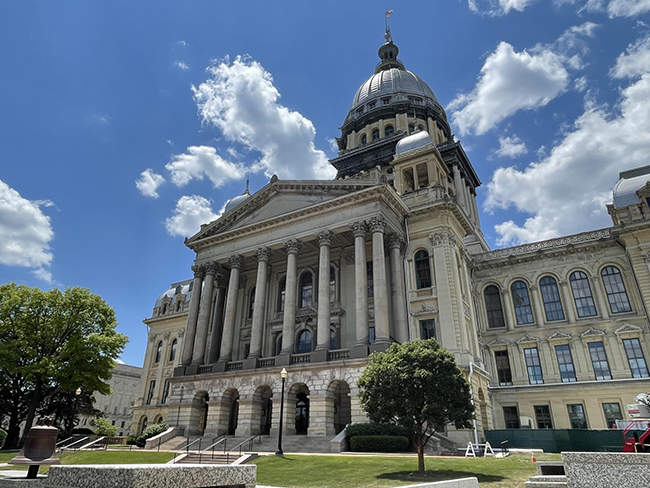
Get Involved
The Illinois General Assembly is debating the future transit and regional rail right now.
The Latest from HSRA
Our Latest Blog Posts
Check out the latest news, updates, and high speed rail insights from our blog!
